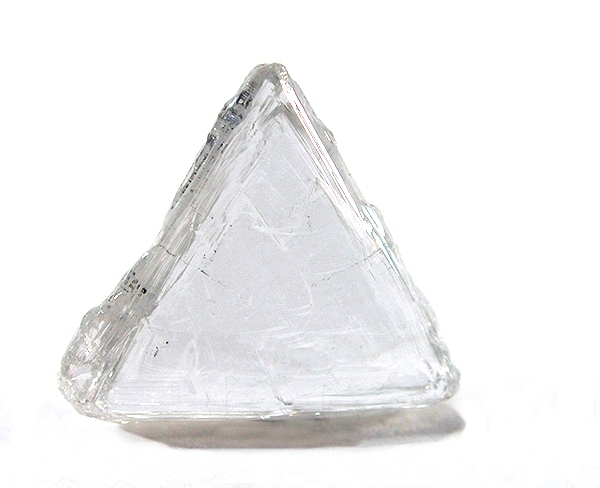The process of making one such faux diamond starts with a handful of white dust that gets compressed in a diamond-lined pressure chamber, then shot with a laser. The combination of extreme pressure and heat turns the raw material into pure diamond — just like Mother Nature makes them.

Image credits Robert Matthew Lavinsky.
The process of making one such faux diamond starts with a handful of white dust that gets compressed in a diamond-lined pressure chamber, then shot at with a laser. The combination of extreme pressure and heat turns the raw material into pure diamond — just like Mother Nature makes them.
Diamonds on the cheap
“What’s exciting about this paper is it shows a way of cheating the thermodynamics of what’s typically required for diamond formation,” said Rodney Ewing, Stanford geologist and co-author of the paper.
The process described by the team uses heat and pressure to turn hydrogen and carbon molecules derived from crude oil and natural gas into literal diamonds. It’s not the first process to try and produce the gem, and indeed not even the first successful one at that — but it is currently the cheapest, most efficient one that produces the highest-quality diamonds.
“We wanted to see just a clean system, in which a single substance transforms into pure diamond — without a catalyst,” Sulgiye Park, the study’s lead author and postdoctoral research fellow at Stanford’s School of Earth, Energy & Environmental Sciences (Stanford Earth) told phys.org.
Natural diamonds form hundreds of kilometers beneath the surface from carbon. The ones we can reach and mine out of the ground were moved there, after formation, through ancient volcanic eruptions. The ones the team produces start as a mixture of three powders derived from petroleum and natural gas. These are particles of carbon atoms arranged in the same structure as in a diamond.

Diamonds immediately make us think of jewelry, but they do have a lot of other cool uses as well. They’re extremely stable chemically, have nice optical properties, very high heat conductivity, and they are the hardest material we’ve found on this good Earth. Industries ranging from metal processing to medicine rely on diamonds for specialized applications. The team hopes that their process will help make diamonds more accessible and more customizable for such applications.
The paper “Facile diamond synthesis from lower diamondoids” has been published in the journal Science Advances.


